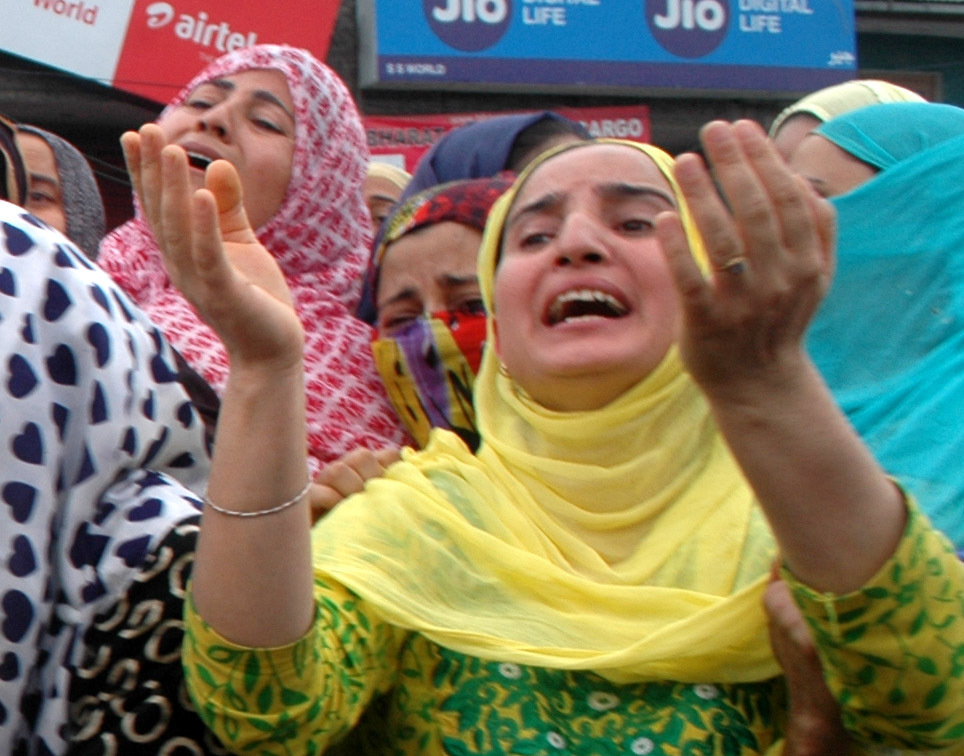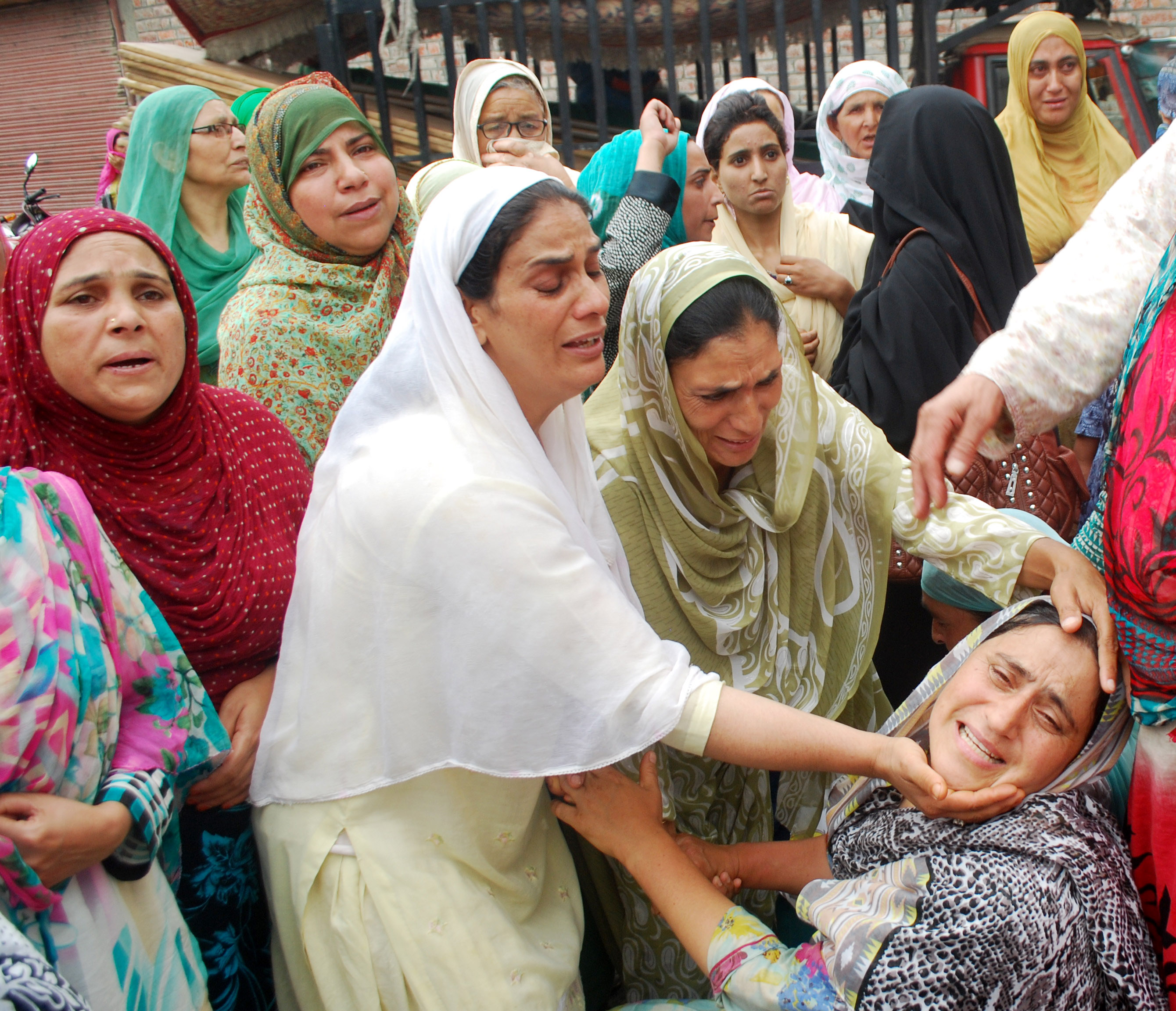Kashmir: More militants killed, none captured – The downward spiral in the Valley continues
The morning of 12th July 2017 woke Kashmir valley up to the news of three more militants being killed in an overnight gun battle with Indian armed forced. Indian Administered Kashmir (IAK), already in the grips of a yearlong Kashmiri uprising, saw tensions escalate considerably over the past week. June 2017 was a month of encounters, with several top militants from Hizbul Mujahideen being killed in raging gun battles, with dozens of civilians being killed and hundreds being injured in the cross fire. Despite the massive human cost and damage to property (entire households were destroyed to capture some of the rebels), none of the militant were captured alive. After last night’s encounter ended, it was discovered that the militants were armed with only a single rifle each. With the anti-insurgency missions being run by fully armed and trained Indian forces including the CRPF and BSF, the questions remains – why is the Indian army unable or unwilling to capture militants instead of killing them in ‘encounters’?

Every time a militant is killed, the Kashmiri population emerges in tens of thousands to participate in their funerals. There is a tremendous outpouring of grief, which often transforms into rage. The response of the Indian administration is to place the Srinagar, as well as most of south and north Kashmir, under curfew. As a result, these massive funeral processions require civilians to defy the curfew – setting the stage to violent clashes that lead to injuries and even deaths of protestors. The civilian killings then become a cause of further outrage and clashes. This vicious circle of grief and death has been a near constant since last year’s killing of young Hizbul Mujahideen commander, Burhan Wani.

Last night’s encounters came at a time when Kashmir was already at a boiling point. 8th July was to mark the first death anniversary of Burhan, and Hizbul Mujahideen had called for a week long shutdown in the valley in protest. Further, the joint resistance had also announced an online campaign to raise global awareness about the Kashmir conflict. Once again, the Indian administration responded by blocking internet services and placing the Valley under curfew and restrictions.

To make matters worse, a bus carrying pilgrims of the popular Amarnath Yatra was allegedly attacked causing the death of 7 pilgrims and injury to 12 others. While the Indian media was quick to label it as a militant attack, all militant groups have unanimously condemned the attacks calling them un-Islamic, and have outright denied any involvement. Kashmir’s political and civil societies were vociferous in showing their solidarity with the pilgrims, with hundreds of youth lining up to donate blood for the injured. Despite the attack still being under investigation and several key questions being raised, the incident has led to further tensions not only in Kashmir but has flared the already raging communal tensions in India.

Now, with the latest encounter in which 3 militants were killed, Kashmir valley has been pushed over its precarious edge. Today’s clashes saw the funeral procession at Nowhatta being spewed with pellets and tear gas and PAVA shells. Several civilians as well as members of the press were injured, although no casualties have been reported. Curfews have been announced for tomorrow as well, and internet services remain suspended.

As tensions are expected to rise, 13th July is marked in Kashmir as Martyr’s Day. With thousands of civilians once again marching the streets of Srinagar, and many more heading towards the Martyr’s graveyard, it remains to be seen whether the Indian forces will once again resort to responding with an iron fist, or will a more moderate and effective stance be taken to bring the turmoil in Kashmir under control.
Photo credits: Faizan Altaf (Instagram: @faizanaltaf15)




